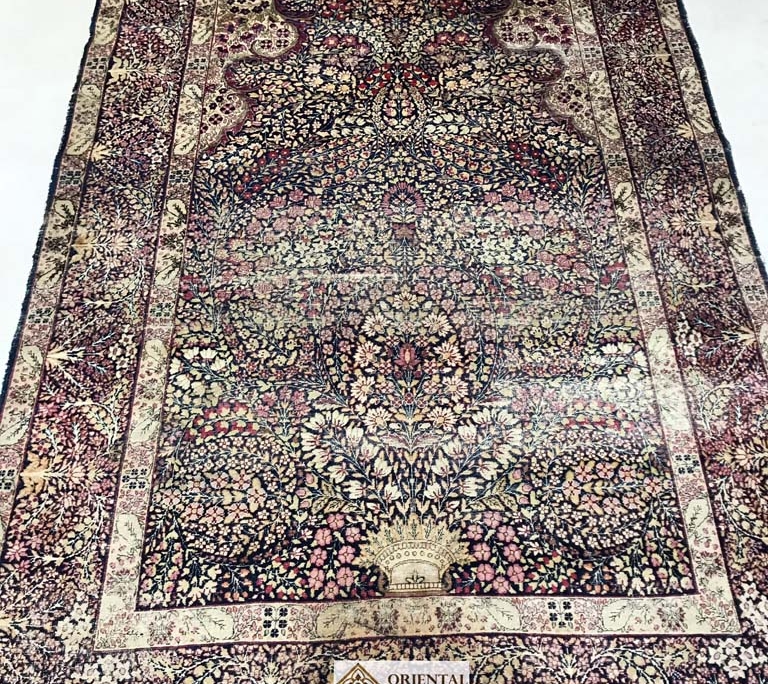Rug Cleaning Banbury
Oriental Rug Spa offer a specialist Persian, Oriental and Turkish rug cleaning for Banbury, Oxfordshire. We also offer a rug repair service. If you own a dirty or soiled rug that needs professional cleaning, then why not give us a call on 01276 423 150. We can arrange collection and delivery for you. The rug wash process required can differ from rug to rug, so we offer various methods of rug cleaning, from full immersion washing to dry cleaning. All rug fibres can be cared for – wool, cotton, silk, viscose, rayon. We can carry out a pet stain and odour treatment, moth treatment and apply a fibre protection to resist against soiling and staining. We have extensive experience with cleaning antique rugs and rugs with unstable dyes and offer a rug repair service, including fringes, sides and pile reweaving.
Antique Kazak Rug

Antique Kazak
The history of Kazak rugs can be traced back to the 17th century, originating from the mountainous regions of the Caucasus, which encompasses present-day Azerbaijan, Georgia, and Armenia. Kazak rugs were traditionally hand-woven by nomadic villagers and tribal communities.
The term “Kazak” itself refers to the Kazakh people, who were one of the Turkic-speaking ethnic groups living in the region. While some historians argue that the Kazak rugs were exclusively woven by Kazakh individuals, others believe that various ethnic groups in the region contributed to the production of these rugs.
Kazak rugs were primarily made for practical purposes, serving as floor coverings and heat insulation in the harsh mountainous climate. The wool used in the rugs was sourced from local sheep and goats, and the vibrant colors were derived from natural dyes. Typical colors used include rich reds, deep blues, earthy browns, and vibrant yellows.
The designs of Kazak rugs are known for their boldness and geometric patterns. Some of the most common motifs include medallions, geometric medallions, and geometric animals such as birds and dragons. These motifs often held symbolic meanings and were passed down through generations.
During the late 19th and early 20th centuries, Kazak rugs started gaining popularity in Western Europe and America. They were highly sought after by collectors and interior designers for their unique designs and craftsmanship. As a result, the production of Kazak rugs began to shift from rural villages to urban centers, where they could be produced on a larger scale.
Today, Kazak rugs still hold a significant place in the world of carpet weaving. They are appreciated for their rich history, cultural significance, and intricate designs. While traditional Kazak rugs are still woven in the Caucasus region, there are also modern adaptations produced in other parts of the world, using traditional techniques and designs.




















